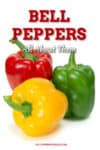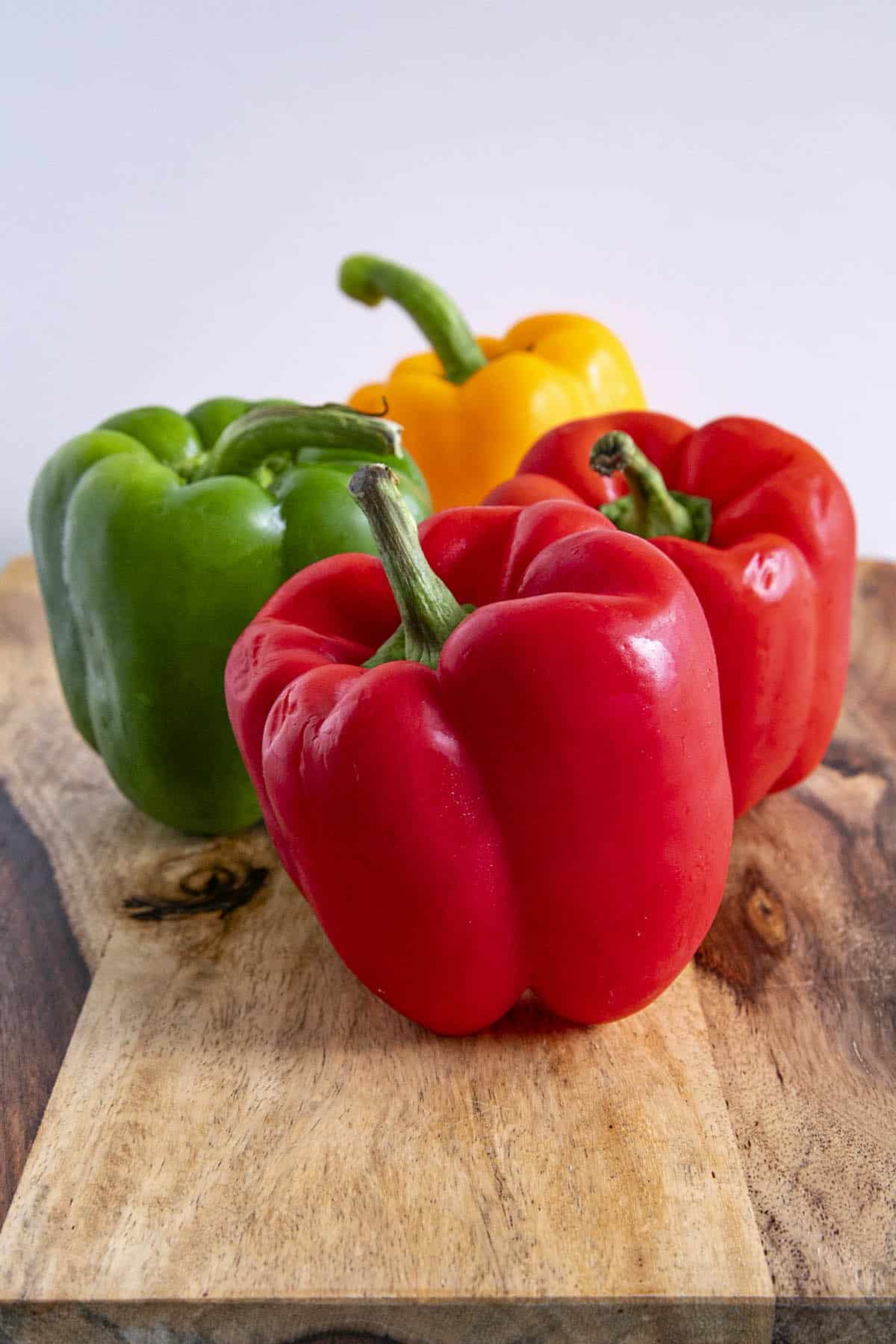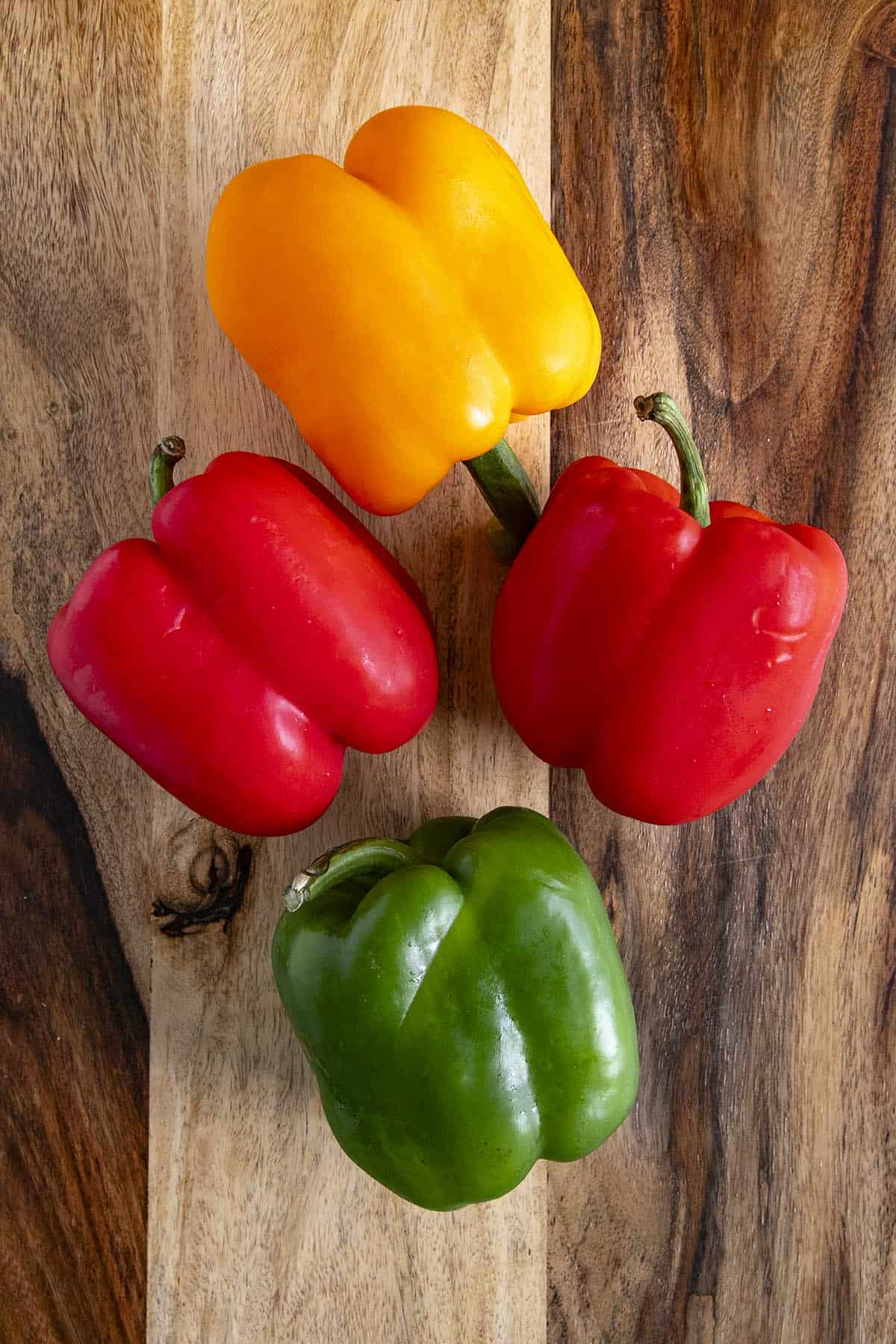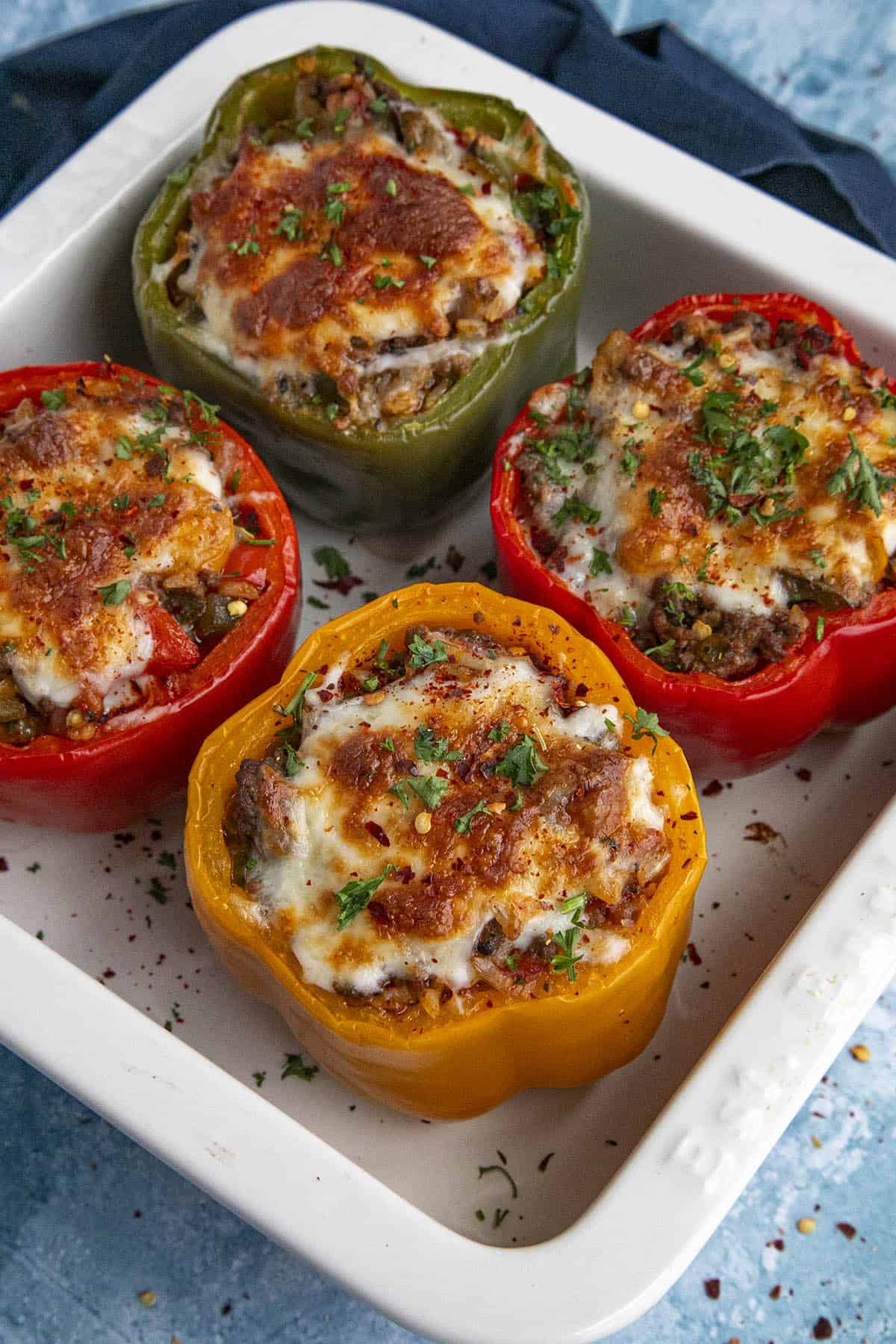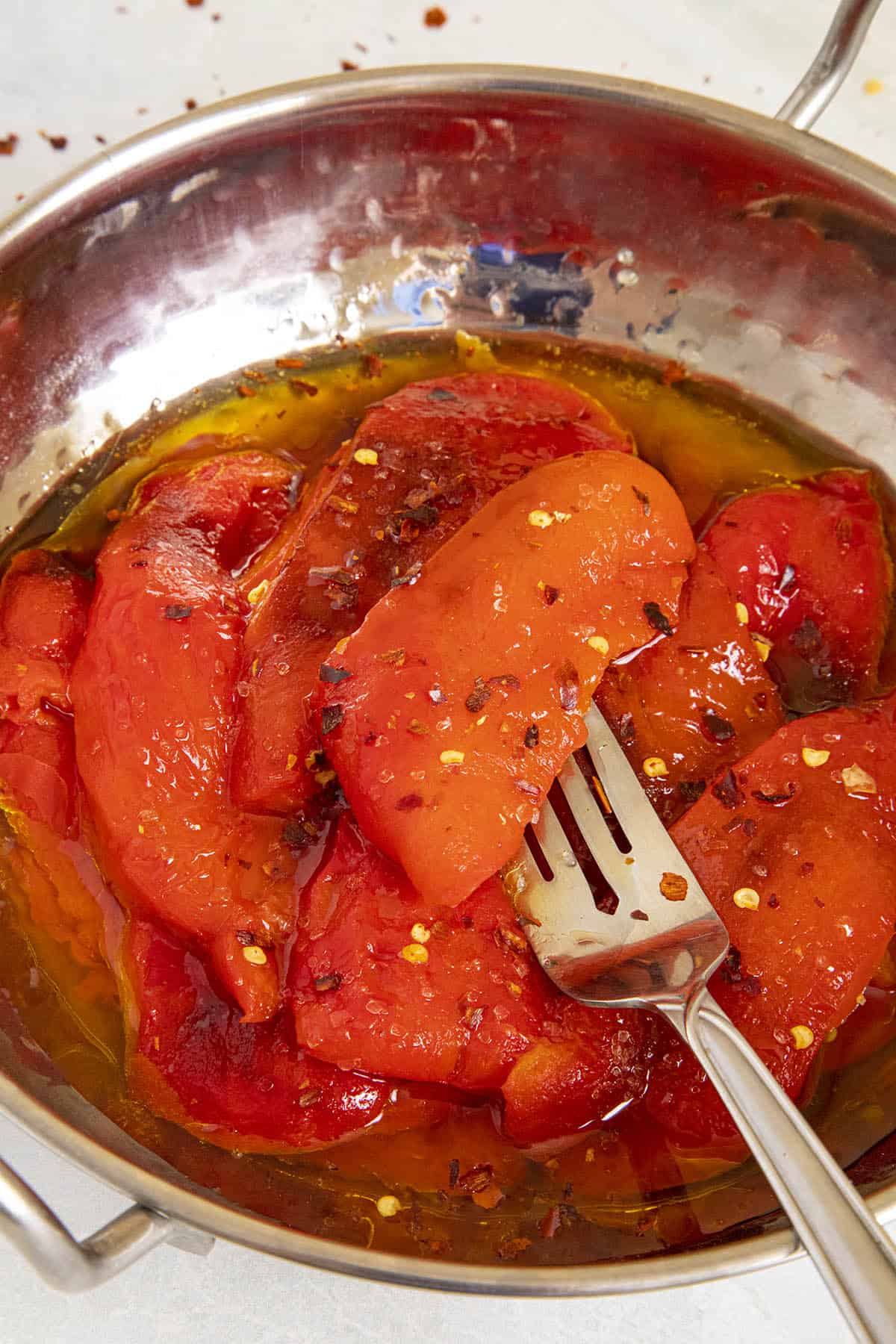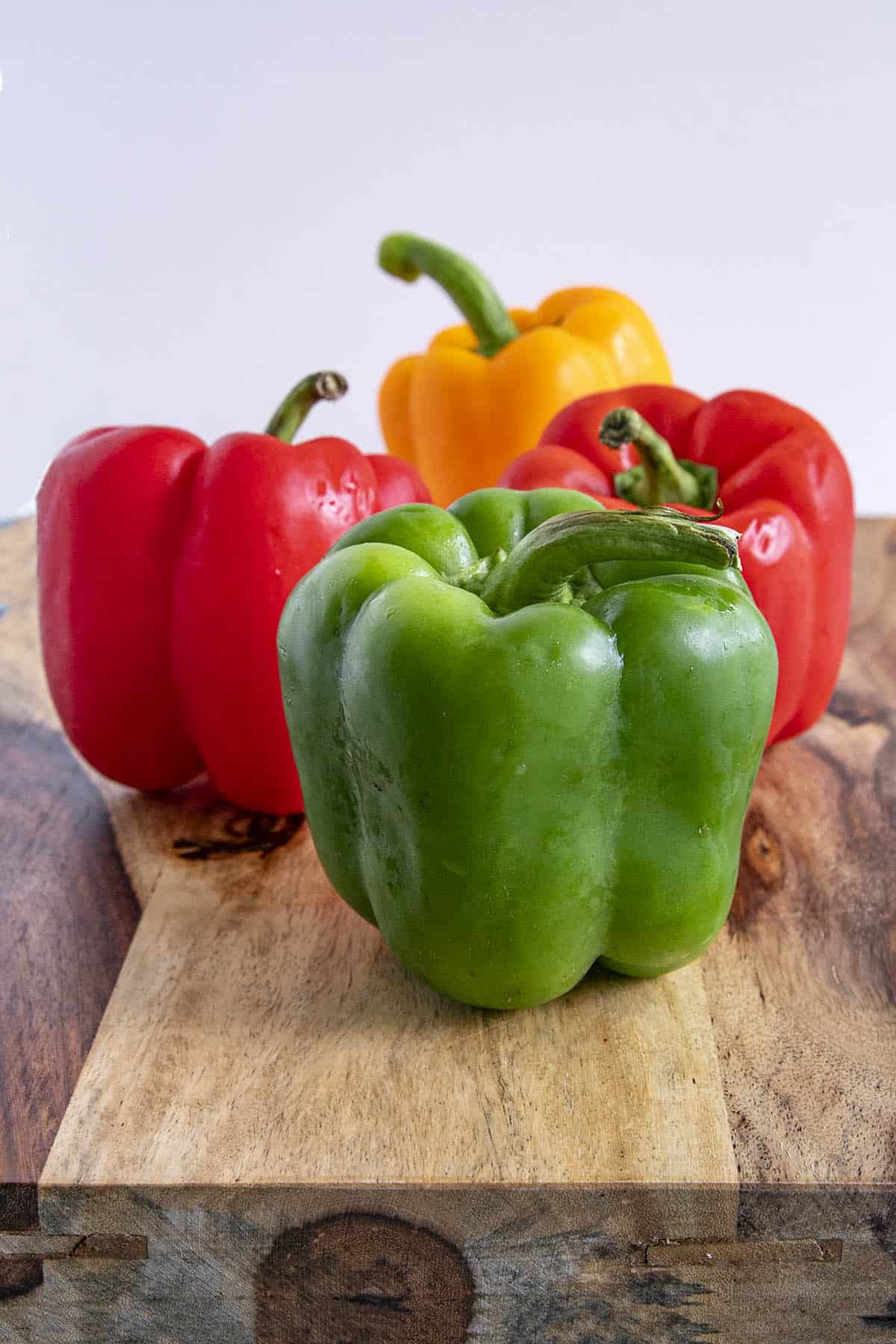NOTE: This post was updated on 1/21/20 to include new information and photos. It was originally published on 9/20/13.
What is a Bell Pepper?
The bell pepper is zero-heat pepper used in many different cuisines around the world. It is of the capsicum annuum species and is used for building flavor and substance into many different dishes. It is essential to Cajun cuisine, where it forms part of the famous Cajun Holy Trinity of vegetables. The peppers are found in an array of bright colors. You’ll find them most commonly in green, yellow, orange or red. However, there are some grown that are brown, white or even purple, though they are more rare. While they can vary in flavor, bell peppers are not hot or spicy, like most other peppers. Color and flavor are determined by the variety of the pepper plant and the stage of ripeness when picked. For example, a red bell pepper or orange bell pepper is simply a mature green bell pepper. This is why the yellow, orange, and red bells cost more because they take more time to harvest. The typical bell pepper, about the size of a large fist. Very mild. Learn more about the health benefits of bell peppers and other chili peppers.
Calories: 31 Water: 94% Protein: 1 gram Carbs: 6 grams Sugar: 4.2 grams Fiber: 2.1 grams Fat: 0.3 grams
To stuff them, slice off the top and stem, then core out the pepper insides. Stuff them with a mixture of cooked meats or vegetarian proteins, rice or other grains, cheeses and seasonings. Bake them at 350 degrees F for 30 minutes to 1 hour, or until the peppers soften up and are ready to serve. You can also cook them in a slow cooker or crock pot for wonderfully easy stuffed peppers. Check out some of my Stuffed Peppers Recipes, with a few more listed below. Once you have healthy seedlings, move them to containers and keep them near the sun. Fertilize them regularly until they are strong enough and the weather is right for planting. Learn more about growing chili peppers here. Also see my Guide to Growing Chili Peppers. Learn more tips for how to freeze peppers. You can also slice them in half and bake or roast them with the skin sides up. Remove them from heat. Add the charred bell pepper to a plastic baggie and seal, or to a bowl and cover. Allow to steam in the baggie about 10 minutes to loosen the skin. When the skins are loosened and the peppers are cool enough to handle, peel off the skins. A towel will help, or a fork. Discard the skin. Use them as you wish per your recipe. Learn more tips on how to roast peppers. Optimal temperature is between 40-45°F. You do not need to wash the peppers before storing. It is best for them to be dry, as water can speed up the rotting process. Bell peppers should last 2-3 weeks when stored this way, depending on the initial freshness, but be sure to check them for signs of rot before using. Learn more tips for how to store peppers. Peppers are also good for the keto diet when used sparingly, with 5.9 net grams of carbs per half cup. They are packed with potassium and vitamins and antioxidants and a smart addition to a healthy diet. I personally enjoy slicing yellow bell peppers or green peppers and serve them together with a variety of dips. People love the sweet pepper taste and I love the presentation of the combination of colors. You can feed them any color of bell pepper, though the red variety is most nutritious, being rich in vitamins A, E, B6, lutein as well as sources of vitamin C and beta-carotene, antioxidants important for a dog’s healthy immune system.
Classic Stuffed Peppers Vegan Stuffed Peppers Peperonata Spicy Vegetarian Stuffed Peppers Easy Italian Sausage Stuffed Peppers Crock Pot Stuffed Peppers – Mexican Style Corned Beef Stuffed Peppers Stuffed Pepper Recipes
